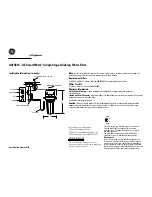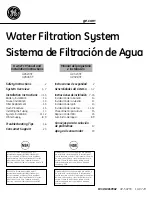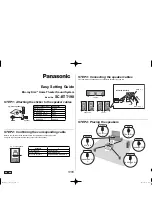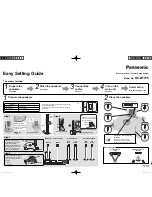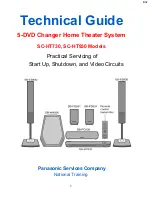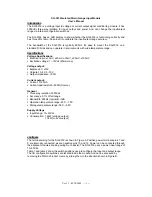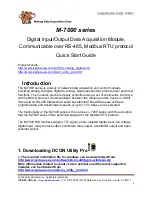
AFW RO System Manual
[13]
Revised 9/09
©Abundant Flow Water System, Inc. 2009
Troubleshooting
Note:
To remove tubing from quick connect fittings, hold in on the small collet ring at the end of
the fitting, push this ring in towards the fitting while gently pulling out on the tubing. This releases
the tubing from the fitting and it will slide out easily
No water production
1.
Check to make sure the feed water line is fully open. Make sure one of the bypass valves is
fully open and the other is fully closed.
2.
Check for kinks in lines.
3.
If you just changed filters, ensure the DI filter is placed correctly with rubber gasket up.
4.
Trace flow of water in the system.
NOTE:
Shut the feed water supply off before removing any
lines. Once the line is removed, turn the water supply back on and check the flow. If using a
pressurized storage tank, ensure the tank valve is shut off as well.
I.
Check water pressure on the feed water line where it enters the first filter. If there is none,
ensure the lines are not kinked or clogged and that the main water supply is on.
II.
Check water pressure on the line coming out of the first and second housing on the bottom.
Pressure and flow from each one should be about the same as going into the unit, if pressure
is significantly less or none at all, check individual filters and housings for blockages and
debris. If filters are dirty, change filters. As your pre-filters start to clog, pressure on the
membrane decreases, decreasing water production and membrane efficiency. If your filters
are extremely dirty they will prevent the membrane from producing any water at all. If water
production is fine, continue to III.
III.
Check water flow on the red line connecting the auto shut off valve (the white block with 4
connections usually located behind the membrane) to the single fitting end of the membrane.
Flow should be the same as in the previous step. If not, the auto shut off is defective and
needs replaced. If flow is fine, move to IV.
IV.
Check the wastewater line, there should be a flow of water coming out of the waste water line
if water is running into the membrane. If hooked up to the drain valve you may be able to hear
the water, but it is best to remove the line to visualize the flow. The waste water keeps the
membrane clean, and the flow restrictor (the white cylinder about 3 inches long with black
valve handle) regulates the amount of wastewater from the membrane, allowing pressure to
build against the membrane and push clean water through. Check the flow of water with the
flow restrictor in place, then remove it and compare the flow of water without the flow
restrictor. If there is no flow with the flow restrictor but plenty of flow without it, or if the flow is
the same before and after the flow restrictor (when closed) it is damaged and needs to be
replaced. If there is no water coming out of the waste line even with the flow restrictor
removed and water is feeding the membrane, then the membrane is fouled and needs
replaced. If water is coming out the waste line properly go to V
V.
Check the clear line connecting the check valve on the membrane to the auto shut off valve.
You should get a steady drip or a slow stream, depending on water pressure. If there is no
water it means purified water is not getting past the membrane. This can be cause by a
number of reasons. On new installations the most common cause is low water pressure, add
a booster pump. If pressure is fine, or on an existing system, and If water flow tested fine in all
the previous steps, the cause is usually a defective check valve or a fouled membrane. Try
replacing the check valve first to see if that solves the problem. If not, or if your membrane is
more than 3 or 4 years old, the membrane is most likely fouled and needs replaced. If the




















